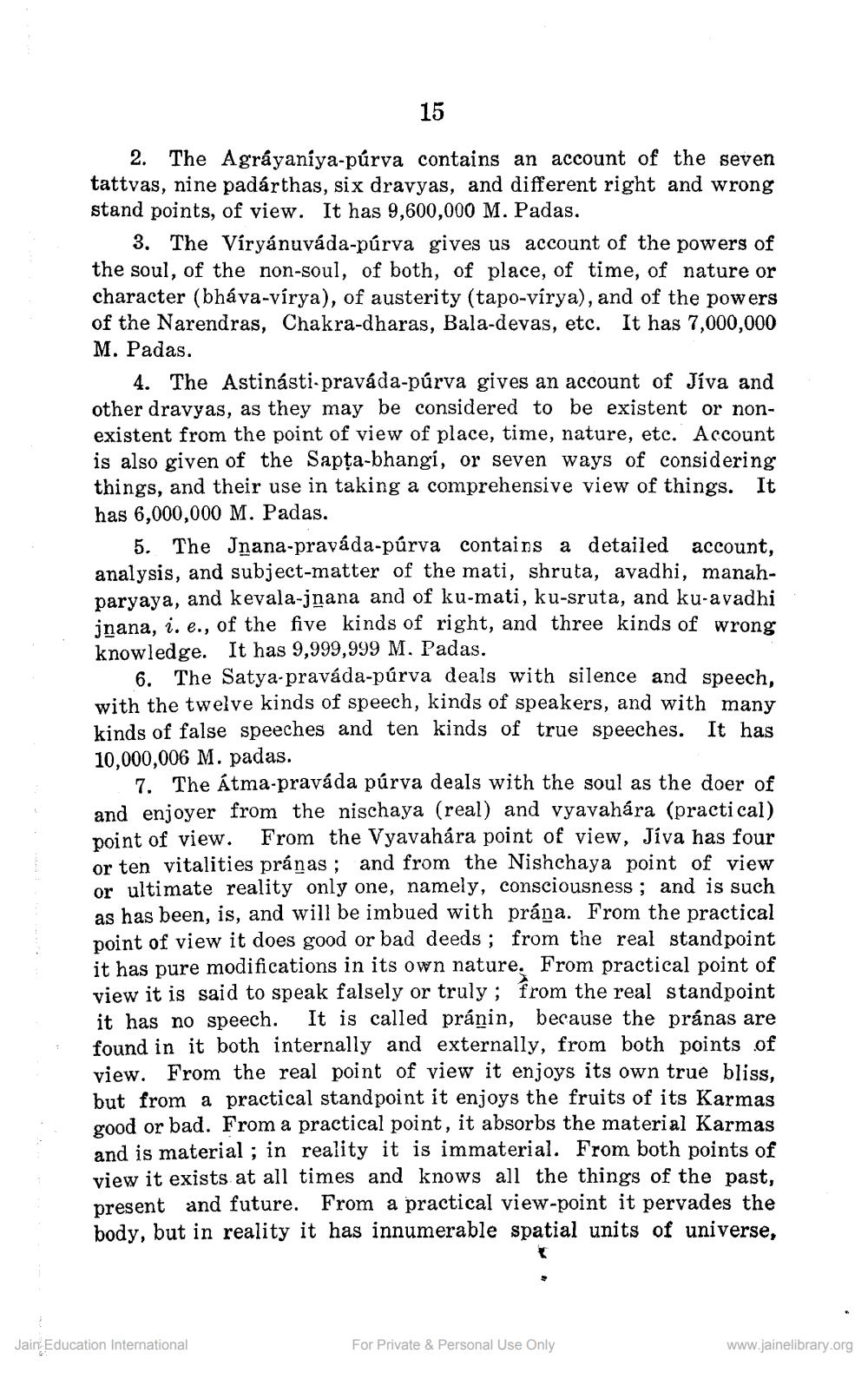________________
15
2. The Agráyaniya-púrva contains an account of the seven tattvas, nine padárthas, six dravyas, and different right and wrong stand points, of view. It has 9,600,000 M. Padas.
3. The Víryánuváda-púrva gives us account of the powers of the soul, of the non-soul, of both, of place, of time, of nature or character (bháva-vírya), of austerity (tapo-vírya), and of the powers of the Narendras, Chakra-dharas, Bala-devas, etc. It has 7,000,000 M. Padas.
4. The Astinásti praváda-púrva gives an account of Jíva and other drayyas, as they may be considered to be existent or nonexistent from the point of view of place, time, nature, etc. Account is also given of the Sapta-bhangí, or seven ways of considering things, and their use in taking a comprehensive view of things. It has 6,000,000 M. Padas.
5. The Jnana-praváda-púrva contains a detailed account. analysis, and subject-matter of the mati, shruta, avadhi, manahparyaya, and kevala-jnana and of ku-mati, ku-sruta, and ku-avadhi jnana, i. e., of the five kinds of right, and three kinds of wrong knowledge. It has 9,999,999 M. Padas.
6. The Satya-praváda-púrva deals with silence and speech, with the twelve kinds of speech, kinds of speakers, and with many kinds of false speeches and ten kinds of true speeches. It has 10,000,006 M. padas.
7. The Átma-praváda púrva deals with the soul as the doer of and enjoyer from the nischaya (real) and vyavahára (practical) point of view. From the Vyavahára point of view, Jiva has four or ten vitalities pránas; and from the Nishchaya point of view or ultimate reality only one, namely, consciousness, and is such as has been, is, and will be imbued with prána. From the practical point of view it does good or bad deeds; from the real standpoint it has pure modifications in its own nature. From practical point of view it is said to speak falsely or truly ; from the real standpoint it has no speech. It is called pránin, because the pránas are found in it both internally and externally, from both points of view. From the real point of view it enjoys its own true bliss, but from a practical standpoint it enjoys the fruits of its Karmas good or bad. From a practical point, it absorbs the material Karmas and is material ; in reality it is immaterial. From both points of view it exists at all times and knows all the things of the past, present and future. From a practical view-point it pervades the body, but in reality it has innumerable spatial units of universe,
Jain Education International
For Private & Personal Use Only
www.jainelibrary.org




